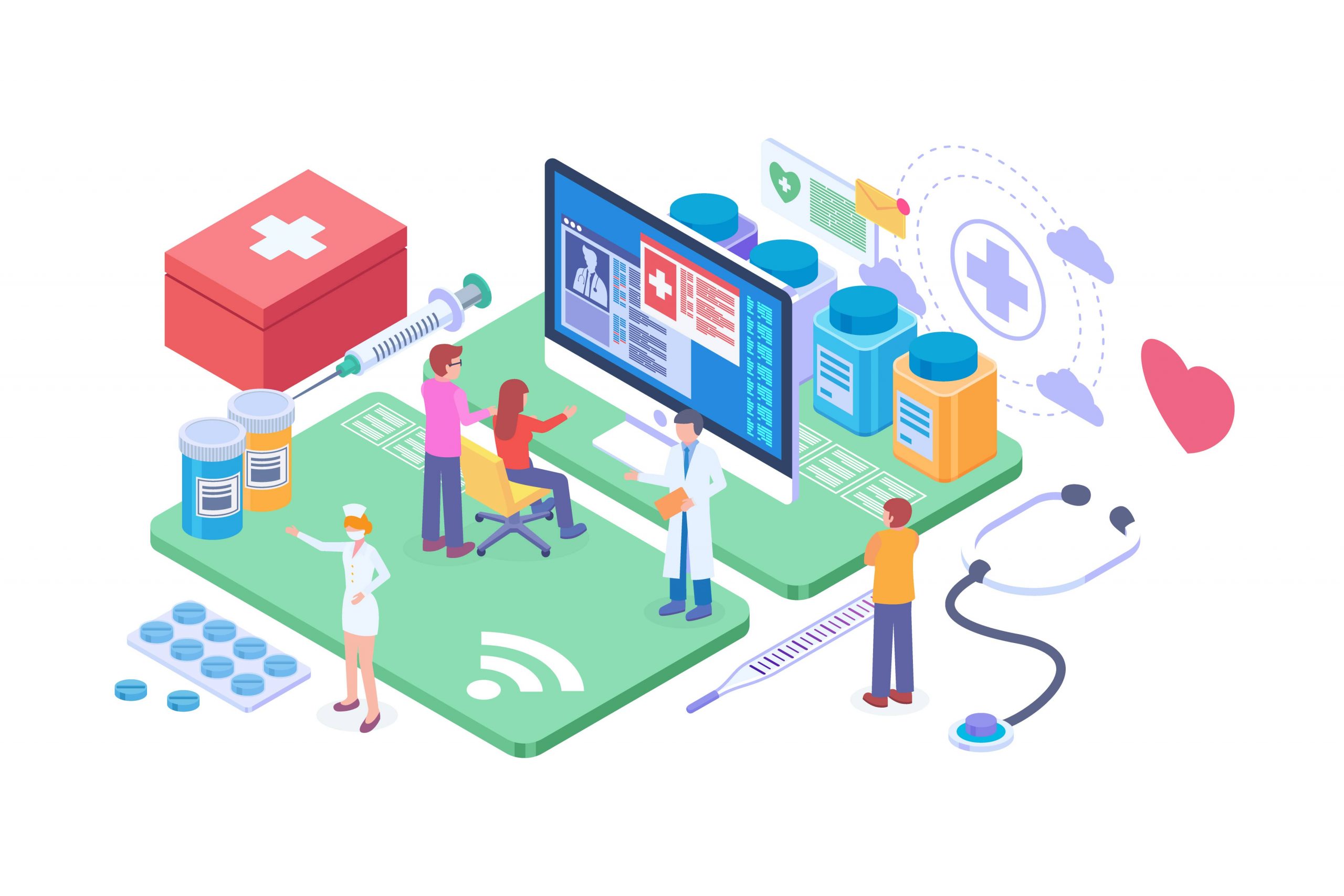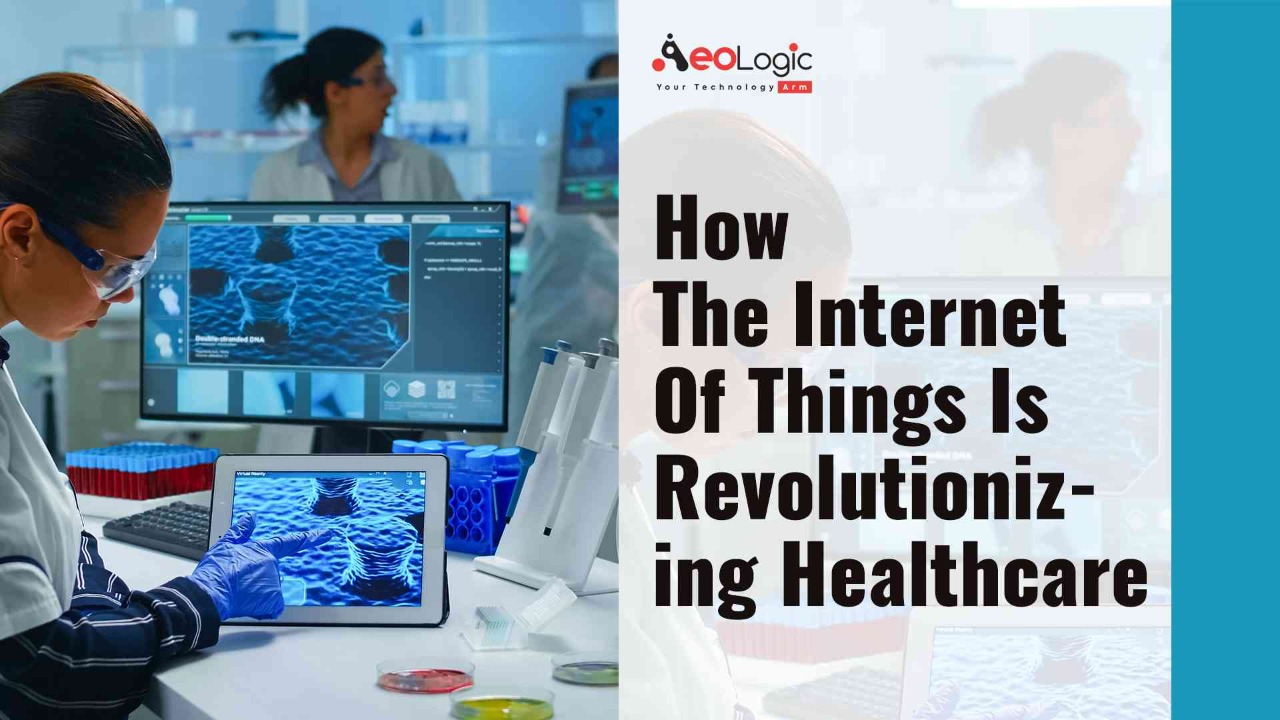The IoT can bring about individualized healthcare if scaled up and connected with existing infrastructure. One of the most significant technological breakthroughs in the previous 10 years has been the Internet of Things (IoT). The global IoT industry was worth 383 billion dollars in 2020, according to Statista, and is predicted to reach one trillion dollars by 2030. In addition, by 2025, consumer expenditure on smart home products and services is expected to exceed $170 billion. In addition, smart home technologies are estimated to be installed in around 400 million homes worldwide. These data show increased industry interest in IoT. While some sectors use IoT to make things easier or receive “innovation points” from customers. So, this blog explores How the Internet of Things is Revolutionizing Healthcare.
What is the Internet of Things?
The Internet of Things, or IoT, is a term used to describe the growing network of physical objects and devices that are connected to the internet. This includes everything from wearable fitness trackers to smart thermostats and even medical devices. The IoT is changing the way we live and work, and it’s also revolutionizing healthcare.
Also Read: How Machine Learning Can Improve Supply Chain Efficiency
How the Internet of Things is Revolutionizing Healthcare

IoT devices are being used in a variety of ways to improve patient care and make the healthcare system more efficient. For example, hospitals are using IoT-enabled devices to track patients’ vital signs and monitor their medications. This allows doctors and nurses to quickly identify and address any problems that arise. Patients can also employ IoT gadgets to assist them to control their own health. For example, many people with chronic conditions are now using wearable fitness trackers to track their activity levels and sleep patterns. People can utilize this information to improve their health and make lifestyle adjustments.
The IoT is still in its early stages, but it’s already clear that it has the potential to transform healthcare. Our understanding of what is conceivable is only beginning to expand as more and more gadgets are able to access the network.
The Top Five Ways that IoT is Revolutionizing Healthcare
- Increased patient engagement: With IoT devices, patients can have greater control over their own health and wellbeing. For example, they can monitor their own vital signs and track their progress against health goals. This increased engagement can lead to better health outcomes overall.
- Improved clinical decision-making: By collecting data from various IoT devices, clinicians can get a more comprehensive view of a patient’s condition. This can help them to make more informed decisions about diagnosis and treatment.
- Reduced costs: IoT can help to reduce the costs of healthcare delivery by improving efficiency and eliminating waste. For example, real-time monitoring of patients’ vital signs can help to identify potential problems early, before they become more serious (and more expensive to treat).
- Enhanced patient safety: IoT devices can help to improve patient safety by providing alerts or notifications in the event of a problem. For example, if a patient falls or has a sudden change in vital signs, an IoT device can send an alert to the caregiver so that they can take action immediately.
- Improved public health: It is feasible to have a deeper understanding of the population by analyzing data from a large number of IoT devices.
Also Read: How Disruptive Technology is Impacting the Future of Retail
The Dangers of Not Adopting IoT Technology
The internet of things is revolutionizing healthcare and there are dangers to not adopting this technology. One of the dangers is that patients will not be able to get the care they need in a timely manner. Another danger is that medical facilities will not be able to keep up with the demand for services.
Also Read: IoT in Agriculture: Cultivating Productivity with Smart Farming
Future Of Internet Of Things In Healthcare
Sensors on an IoT unit can interact with the physical world and transmit data to the Internet. IoT-based healthcare equipment can communicate to provide quick answers or save a life.
IoT healthcare gadgets would deliver passive data to the cloud for clinicians to use. IoT-based healthcare services improve a patient’s health and help in crucial situations, as well as healthcare personnel’s efficiency and workflows.
Also Read: How The Retail Sector is Using IoT?
Conclusion: Solutions for Hospitals to Adopt IoT
The Internet of Things is revolutionizing healthcare by providing solutions for hospitals to adopt IoT. One way hospitals can take advantage of IoT is by using sensors to track patients’ vital signs. This data can use to monitor patients’ health and predict when they may need medical attention. Additionally, hospitals can use IoT to manage their inventory and keep track of medical supplies. This helps ensure that hospital staff always have the supplies they need on hand, which can help improve patient care.
Finally, IoT can also benefit to improve communication between hospital staff and patients. For example, doctors can use IoT-enabled devices to send reminders to patients about upcoming appointments or prescription refills. By taking advantage of the many benefits of IoT, hospitals can improve the quality of care they provide to their patients.
Are you looking to implement internet of things (IoT) solution into your retail business? If yes so please feel free to contact us at support@aeologic.com









